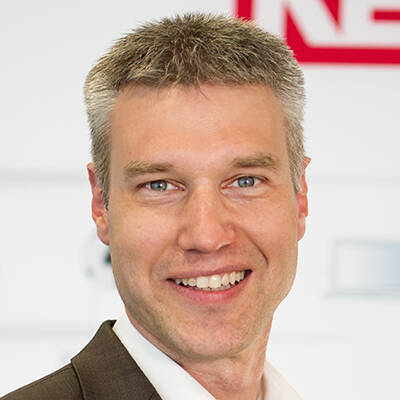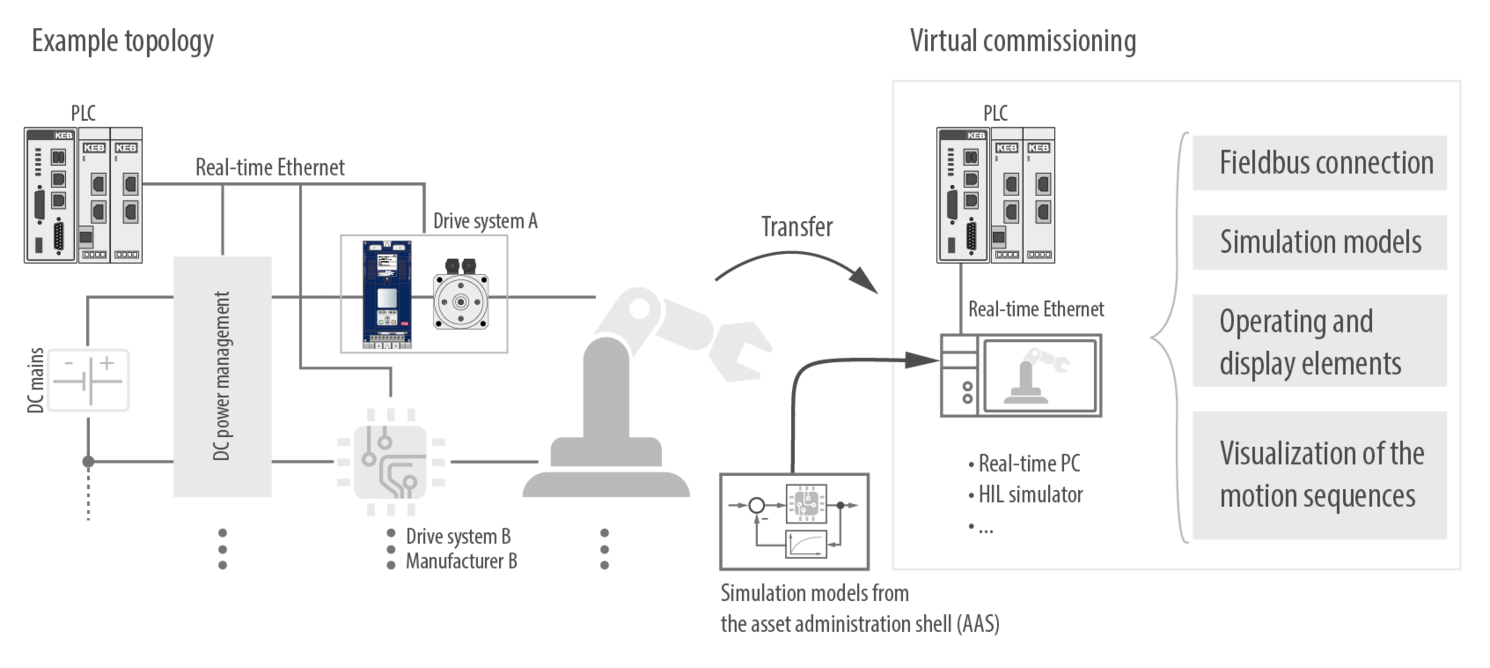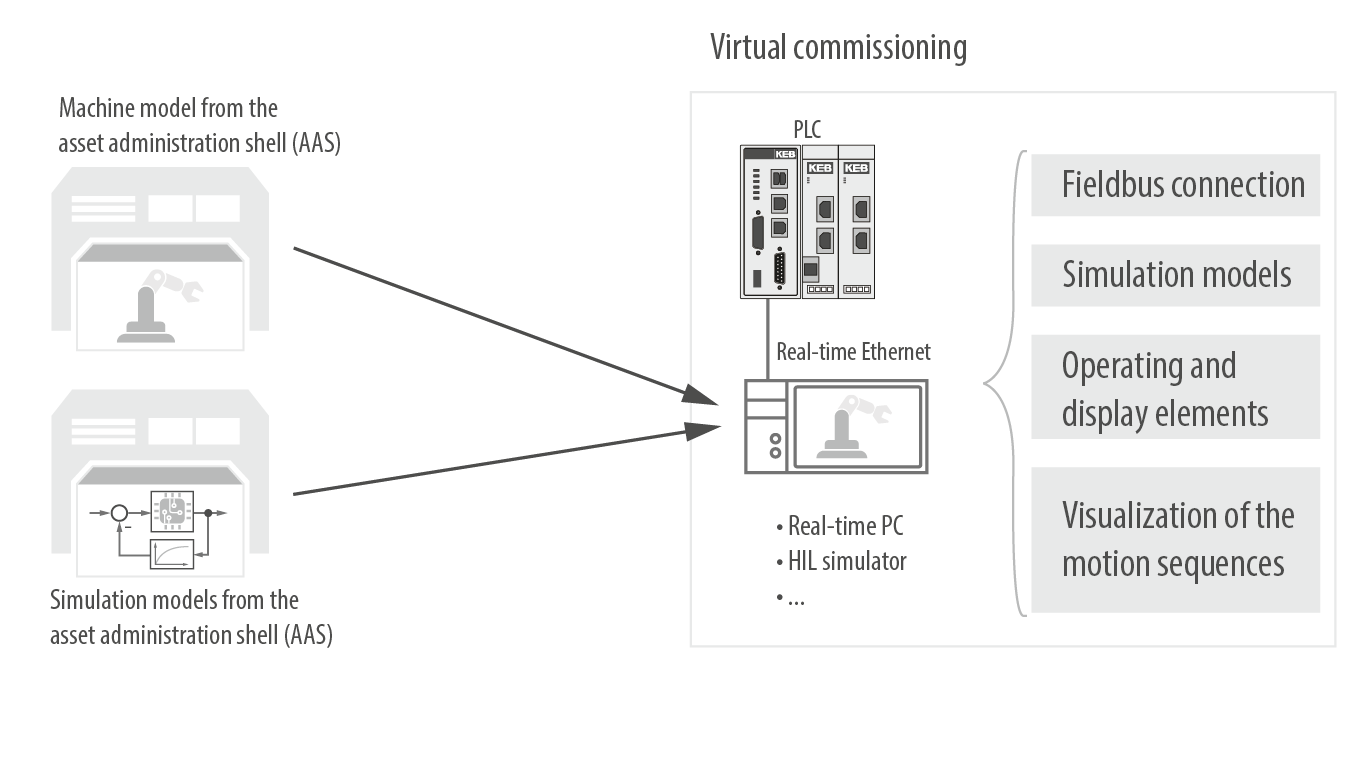Digital twin for virtual commissioning
Optimization of machines through real-time simulations
The digital twin of a product or “asset” serves, among other things, to support the design, production, engineering – for example, when integrating a component into a machine – and use of an asset. For this purpose, the digital representation of the asset is gradually fed with more information during its life cycle, which helps in various ways to exploit savings potentials.
In the first step, these are often technical data for a product, which can be retrieved in standardized formats via the asset administration shell, thus considerably reducing the effort required for integration. In the case of a complex asset such as a drive controller this digital information can go far beyond basic, technical data, so that extensive tasks can be handled more easily than before, thereby creating added value.
Which facets optimize the product life cycle?
Within the pilot project “Digital Energetic Twin” (DeZ), a sub-project of the it's owl innovation project “Technical Infrastructure for Digital Twins” (TeDZ) , the following question is being addressed: Which facets of a digital twin can help to optimize the energetic behavior of components, machines or even entire plants over the product life cycle?
For this purpose, various core use cases, such as “virtual commissioning”, were described. This requires a simulation model of the machine, which is created by the machine builder. With this model the behavior of the planned machine (such as material flow, kinematics, etc.) can be simulated in advance. To perform the virtual commissioning, the real control (PLC) is connected to a suitable real-time simulation system to execute the model of the machine.
This takes place in real time, so that there is no difference for the PLC compared to the not yet completed, real setup. On this basis, the PLC programmer can already realize and test a draft of the control program during the planning phase without having to have the real machine at his disposal.
This results in significant time and cost savings, as the machine is only completely assembled for the first time at its actual place of use. In addition, when using suitable simulation models, very precise statements can be made about the energetic behavior of the components.
Scalable simulation depth
In the pilot project “DeZ”, challenges such as the “creation of standardized models” are being addressed, which can be used in a wide range of tools together with models from other manufacturers. Another task is to provide models with a scalable simulation depth. Typical material flow simulations currently depict the behavior of a drive in a very simplified way. Even with high-performance real-time systems, it is not possible to simulate a large number of components in control real-time (e.g. ~1 ms cycle) with a sufficiently high level of detail, so that meaningful conclusions can be drawn about the energetic behavior. Therefore, it is investigated with which approaches the simulation depth can be increased specifically for individual components without making further changes to the rest of the machine simulation.
The provision of the models should be done directly via the asset administration shell, similar to the provision of technical data and other engineering information. In addition, information from the machine's existing engineering data will be used to automatically generate the overall simulation model.
All the methods mentioned above should ultimately make it possible to carry out optimizations on the basis of the digital twin in order to save costs: On the one hand by simplified engineering, on the other hand by using optimally designed and tailored components. Last but not least, the environmental impact can also be reduced by using less material and energy.


